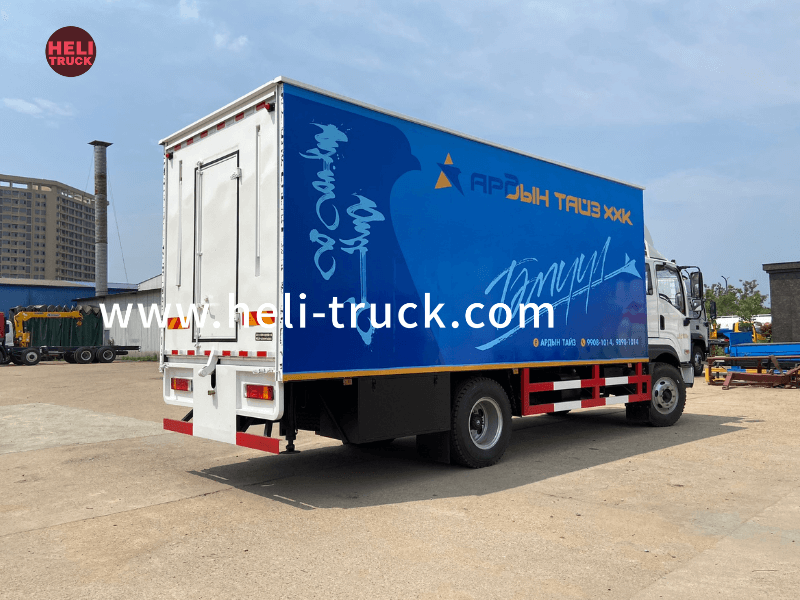Introduction:
Garbage compactor trucks play a crucial role in waste management systems by collecting and compacting waste efficiently. These trucks are essential for keeping our cities clean and ensuring proper disposal of waste materials. However, operating these large vehicles in urban environments can be challenging due to limited visibility, especially in crowded and busy areas. In recent years, there has been a growing emphasis on improving the visibility of garbage compactor trucks to enhance safety for both the operators and the general public. This article will explore the importance of visibility for garbage compactor trucks, the challenges associated with poor visibility, and various strategies and technologies that can be implemented to enhance visibility for these vehicles.
Importance of Visibility for Garbage Compactor Trucks:
Visibility is a critical factor in the safe operation of any vehicle, and garbage compactor trucks are no exception. These vehicles are often operated in densely populated urban areas, where there are numerous obstacles and hazards that can impede visibility. Poor visibility can increase the risk of accidents, collisions, and injuries to both the operators of the trucks and pedestrians or other road users. Inadequate visibility can also lead to inefficient waste collection processes, as operators may struggle to navigate tight spaces or properly position the truck for waste collection.
Challenges Associated with Poor Visibility:
Several factors contribute to poor visibility for garbage compactor trucks. The size and design of these vehicles can create blind spots, making it difficult for operators to see pedestrians, cyclists, or other vehicles in their vicinity. Additionally, the height of the truck and the placement of the driver's cab can limit the operator's field of vision, especially when maneuvering in tight spaces or reversing. Environmental conditions such as rain, fog, or low light can further reduce visibility and increase the risk of accidents.
Another significant challenge is the presence of vulnerable road users, such as children, elderly individuals, or individuals with disabilities, who may be less visible to truck operators. This poses a serious safety concern, as accidents involving vulnerable road users can have severe consequences. Additionally, the noise generated by compactor trucks can make it challenging for operators to hear approaching vehicles or pedestrians, further compromising safety.
Strategies for Enhancing Visibility:
Given the importance of visibility for the safe operation of garbage compactor trucks, it is essential to implement strategies and technologies that can enhance visibility and minimize the risks associated with poor visibility. The following are some effective strategies that can be employed to improve visibility for garbage compactor trucks:
1. Enhanced Lighting Systems:
One of the most straightforward ways to improve visibility for garbage compactor trucks is by enhancing the lighting systems on the vehicle. Brighter headlights, taillights, and turn signals can make the truck more visible to other road users, especially in low-light conditions or during inclement weather. Additionally, installing high-mounted brake lights and strobe lights can help to alert surrounding vehicles and pedestrians to the presence of the truck.
2. Rearview Cameras and Sensors:
Rearview cameras and sensors are valuable tools for improving visibility for garbage compactor truck operators, especially when reversing or maneuvering in congested areas. find out this here provide a clear view of the area behind the truck, reducing the risk of collisions with obstacles or pedestrians. Audible alerts from sensors can also warn the operator of potential hazards in the vehicle's blind spots, enhancing safety.
3. Blind Spot Detection Systems:
Blind spot detection systems use sensors and cameras to monitor the truck's surroundings and alert the operator to the presence of vehicles or pedestrians in the vehicle's blind spots. These systems can significantly reduce the risk of accidents caused by limited visibility and help operators make safer maneuvers on the road.
4. 360-Degree Cameras:
360-degree camera systems provide operators with a comprehensive view of the truck's surroundings, eliminating blind spots and increasing awareness of potential hazards. These cameras can be especially useful when maneuvering in tight spaces or navigating crowded urban areas where visibility is limited.
5. Reflective Markings and Signage:

Applying reflective markings and signage to garbage compactor trucks can improve their visibility to other road users, especially at night or in low-light conditions. Reflective tape, decals, and high-visibility paint can make the truck more conspicuous and reduce the risk of collisions with other vehicles.
6. Training and Awareness Programs:
Proper training for garbage compactor truck operators is essential for promoting safe driving practices and increasing awareness of the importance of visibility. Training programs should focus on defensive driving techniques, hazard awareness, and the proper use of visibility-enhancing technologies to reduce the risk of accidents and improve overall safety.
7. Collaborative Efforts with Municipalities:
Municipalities and waste management authorities can play a crucial role in enhancing visibility for garbage compactor trucks by implementing infrastructure improvements and regulations that prioritize safety. Measures such as designated waste collection zones, clear signage, and traffic management strategies can help create a safer environment for waste collection operations.
Conclusion:
Enhancing visibility for garbage compactor trucks is essential for promoting safety, efficiency, and sustainability in waste management systems. Poor visibility poses significant risks to both operators and the public, making it imperative to implement strategies and technologies that improve visibility and minimize the potential for accidents. By investing in enhanced lighting systems, rearview cameras, blind spot detection systems, and other visibility-enhancing technologies, waste management authorities can improve the safety of garbage compactor truck operations and contribute to a cleaner and safer urban environment. Collaborative efforts between stakeholders, including truck operators, municipalities, and technology providers, are key to achieving comprehensive visibility solutions that benefit all parties involved in waste management processes.
